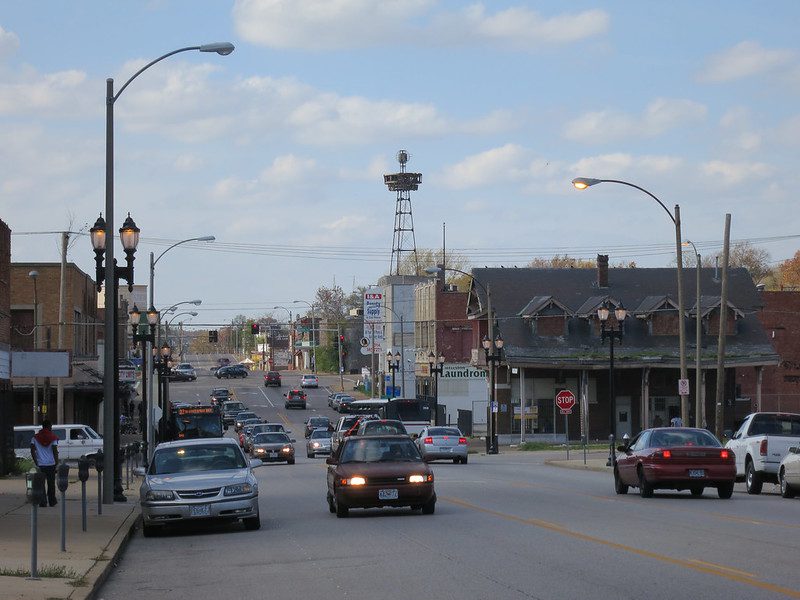
In The Tenderloin: Sex, Crime and Resistance in the Heart of San Francisco, Randy Shaw digs deep into the history of the neighborhood where he built the Tenderloin Housing Clinic, a powerful organization whose advocacy has helped to improve the conditions of the neighborhood’s Single Room Occupancy Hotels. I was delighted by how much of it resonated with the stories my uncle told me. The Tenderloin, as one of San Francisco’s poorest and most diverse neighborhoods, routinely receives one-dimensional derogatory press coverage in both mainstream and alternative media. A national voice in progressive politics and activism, Randy Shaw is the author of The Activist’s Handbook: Winning Social Change in the 21st Century, and Beyond the Fields: Cesar Chavez, the UFW and the Struggle for Justice in the 21st Century, and a contributor to Shelterforce. Shaw’s main achievement here is the long view he takes to show the larger historical forces that shaped the neighborhood with an emphasis on the activism that has given its residents a fighting chance in a city that has experienced multiple displacement spasms in recent decades. One fascinating aspect of the book is how sex panic shaped the early years of the neighborhood. The Tenderloin has always attracted a steady stream of moral crusaders whose obsession with the sexual proclivities of its residents masked a deeper political agenda. With the consistent pattern of the neighborhood nightclub and cafe shutdowns by vice squads and federal agents it would be easy to reduce the history of the neighborhood to sex and drugs. But the anxiety that elites have always felt towards the Tenderloin goes far beyond sex. In 1948, state and federal authorities, gripped in the anti-communist project, colluded to shut down the California Labor School that welcomed guest lecturers and performers such as Pete Seeger, W.E.B Dubois, Maya Angelou, and many others.
The book really hits stride when Shaw tells the stories of community organizing in the 1980s, for example, Leroy and Kathy Looper, who bought the run-down Cadillac Hotel and converted it into the city’s first nonprofit residential hotel for permanent low-income housing. The Loopers became a lynchpin in subsequent efforts to organize and improve the community with the community in mind. Organizations such as the North of Market Planning Coalition (among others) won important victories, like height limits in new developments, restrictions on the conversion of residential hotels to tourist use, and substantial contributions from luxury hotels to the neighborhood’s affordable housing stock. It could be argued that Tenderloin activists during the 1980s came closest to successfully implementing what is now dubbed “development without displacement,” in an at-risk neighborhood.
Shaw’s claim that the Tenderloin has become immune to gentrification thanks to these important reforms (and characteristics of the housing stock) deserves some scrutiny.
Impressively, about 25 percent of the Tenderloin’s housing stock is outside of the speculative market through non-profit ownership, and other tenants enjoy a host of zoning and anti-demolition protections. These wins have indeed made the neighborhood far more resistant to displacement, and as such should be studied by every serious urban housing activist. Yet, a one-bedroom unsubsidized apartment in the Tenderloin averages about $2800.00. Because of community activism, San Francisco’s displacement epidemic has proceeded much more slowly in the neighborhood. But increased resilience does not equal immunity.
Ultimately, The Tenderloin is for both history buffs and community organizers. Shaw accomplishes much in these pages, not the least of which is dignifying the people who live in this often-slandered neighborhood, and the activism that has shaped their lives.
(Photo credit: Courtesy of Thomas Hawk, via flickr, CC BY-NC 2.0)

ReviewOrganizing
Review of The Tenderloin: Sex, Crime & Resistance in the Heart Of San Francisco
I learned about the history of the Tenderloin, San Francisco’s maligned neighborhood, through walks in it with my Great Uncle, Milton Hendrick, and listening to his stories. He lived at […]




Comments